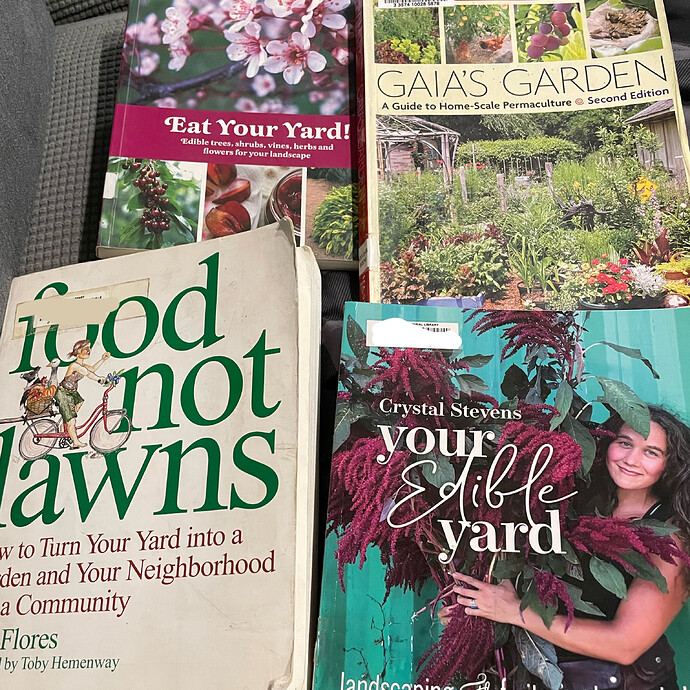Hi! I’m new here and would love your expert thoughts. I am a newbie (but intrepidly so). I use she/her pronouns.
I am new to having an actual yard, and in my first year I focused first on bugs and bees and birds and critters. (Followed wildlife certification - brush piles in the woods in the backyard, bubbling water, native plants, so many native wildflowers, etc.)
I love the idea of edible landscaping that creates community - neighbors eating fruit or picking herbs as they walk by, and bonding over gardening. (I planted some native blueberry bushes, so far that’s my only fruit plant.) I also am hoping to make my oak-and-pine back woods a little more productive, either for humans or critters.
I had an arborist out for some dead trees, who when I mentioned my hope to plant fruit trees, was dubious about my ability to manage fruit trees as a beginner. I wanted to fact-check that here and learn from you.
My initial thoughts for my zone 6b yard, based on reading rather than doing - I freely admit my ignorance:
-
pawpaws (maybe Susquehanna & Sunflower),
-
saskatoon / juneberry (not sure what variety),
-
haskaps/honeyberry (maybe Aurora & honeybee),
-
blueberries (maybe add Chandler & O’Neal),
-
sweet cherries (maybe Stella & Lapins).
-
Black currants are my favorite, but illegal where I live due to pine blight
-
I love the idea of apples but they seem kind of intimidating. (I found some of these varieties that sounded like I might not kill them and they’d cross-pollinate? Honeycrisp or Granny Smith or Winecrisp; with Bonkers NY 73334-35 or Sweet Sixteen)
I’d love your thoughts, warnings on stumbling blocks, examples / photos from your own yards, or just attagirl you can do this!


